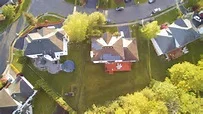Many real estate professionals jumped on the trend, using photos and videos captured with drones to catch potential buyers' eyes and gain a competitive advantage.
But drones aren't just great for enhancing the marketing of your home. Many home inspection companies use them as a tool to investigate rooftops too high or steep to safely access. They can then provide their customers with high-quality photos of any damage that might have been missed during a traditional inspection. Inspectors can even stream video on a tablet or smartphone to show customers the condition of their roof and other hard-to-reach areas of their home. This method really gives a seller and buyer the best information the quickest and safest.
It's probably a good idea to know what the FAA guidelines that govern drone use before you go out and buy a drone or hire a professional. Here's a quick overview.
- You (or the drone operator you hire) must have a remote pilot-in-command certificate or a Section 333 waiver.
- The drone must not exceed 55 lbs. If it weighs more than that, it must be registered with the FAA.
- You can only operate drones within Class G airspace (typically very near the ground at 1,200 feet or less).
- You must keep the drone within your line of sight at all times, flying at or under 400 feet and 100 mph. Note: you cannot fly a drone over people unless you have obtained a waiver.
- You (or the drone operator you hire) should have liability insurance. It's also a good idea to obtain personal injury liability coverage in your E&O policy to protect your business if the drone operator unintentionally infringes on a person's right to privacy.
If you're thinking about using a drone, be sure to check the laws in your state or country. The FAA issued updated commercial requirements for drone operation as recently as 2016, but regulations may vary depending on location. For more information, go to www.faa.gov/uas/
This article adapted from Old Republic Home Warranty Article 4/4/17.


